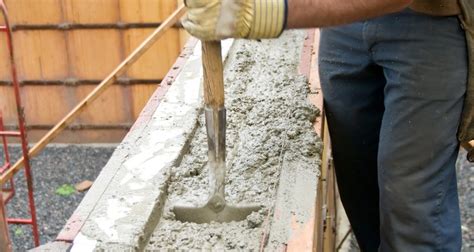How To Mix Pea Gravel In Concrete
Ronan Farrow
Apr 01, 2025 · 3 min read

Table of Contents
- How To Mix Pea Gravel In Concrete
- Table of Contents
- How to Mix Pea Gravel in Concrete: A Comprehensive Guide
- Understanding the Benefits of Using Pea Gravel in Concrete
- Choosing the Right Materials: A Step-by-Step Approach
- Determining the Correct Mix Ratio: A Crucial Step
- Understanding the Importance of the Water-Cement Ratio
- Mixing the Concrete: A Practical Guide
- Pouring and Finishing Your Concrete Project
- Safety Precautions: Prioritizing Safety
- Conclusion: Achieving Success with Pea Gravel Concrete
- Featured Posts
- Latest Posts
How to Mix Pea Gravel in Concrete: A Comprehensive Guide
Mixing pea gravel into concrete is a common practice to create a stronger, more durable, and cost-effective concrete mix, especially for applications like driveways, patios, and walkways. This guide will walk you through the process, ensuring you achieve the desired results. We'll cover everything from choosing the right materials to achieving the perfect mix ratio.
Understanding the Benefits of Using Pea Gravel in Concrete
Adding pea gravel to your concrete mix offers several key advantages:
- Increased Strength and Durability: Pea gravel provides additional aggregate, increasing the overall strength and resistance to cracking and wear. This is particularly beneficial for high-traffic areas.
- Improved Drainage: The gravel helps improve drainage, preventing water accumulation and potential damage from freeze-thaw cycles. This is crucial for outdoor applications.
- Cost-Effectiveness: Pea gravel is generally less expensive than other aggregates, making it a budget-friendly option without compromising quality.
- Enhanced Aesthetics: Depending on the color of the gravel, it can add visual appeal to your finished concrete project.
Choosing the Right Materials: A Step-by-Step Approach
Before you begin mixing, ensure you have the correct materials:
- Portland Cement: The binding agent that holds the concrete together. Choose a type suitable for your project's requirements.
- Pea Gravel: Select clean, well-graded pea gravel of a consistent size. Avoid gravel with excessive fines (dust) or large variations in size.
- Sand: Use clean, well-graded sand to fill the voids between the pea gravel and cement, ensuring a dense and strong mix.
- Water: Use clean, potable water. The amount of water will affect the workability and strength of the concrete.
Determining the Correct Mix Ratio: A Crucial Step
The ideal mix ratio for concrete with pea gravel depends on the specific application and desired strength. A common ratio is a 1:2:3 mix of cement, sand, and pea gravel (by volume). However, it's crucial to consult a concrete mix calculator or experienced professional for precise ratios based on your specific project needs. Using too much gravel can compromise strength, while using too little might not provide the desired benefits.
Understanding the Importance of the Water-Cement Ratio
The water-cement ratio is equally important. Too much water will weaken the concrete, while too little will make it difficult to work with. Aim for a consistency that is workable but not overly wet.
Mixing the Concrete: A Practical Guide
Follow these steps for efficient and effective mixing:
- Dry Mixing: First, dry mix the cement, sand, and pea gravel thoroughly in a wheelbarrow or large container. This ensures even distribution of the ingredients.
- Adding Water: Gradually add water while mixing, ensuring all the dry ingredients are fully saturated. Use a shovel or hoe to mix thoroughly.
- Consistency Check: The mix should be workable, like a thick paste. It shouldn't be runny or overly dry. Adjust the water accordingly until the desired consistency is achieved.
- Final Mixing: Continue mixing for several minutes until a uniform mixture is obtained. You may need to use a power mixer for larger batches.
Pouring and Finishing Your Concrete Project
Once mixed, pour the concrete into the desired location. Use a screed to level the surface, and finish using appropriate tools based on the desired texture. Proper curing is critical to achieve optimal strength and durability. Always follow manufacturer's instructions on curing time.
Safety Precautions: Prioritizing Safety
Remember to wear appropriate safety gear, including gloves, safety glasses, and sturdy work boots while working with concrete. Proper ventilation is also essential.
Conclusion: Achieving Success with Pea Gravel Concrete
By carefully following these steps, you can successfully mix pea gravel into your concrete, creating a stronger, more durable, and potentially more cost-effective project. Remember to always prioritize safety and consult professionals when necessary to ensure the best results for your specific application. Good luck!
Featured Posts
Also read the following articles
| Article Title | Date |
|---|---|
| How To Keep Birds Out Of Your Barn | Apr 01, 2025 |
| How To Hunt Turkeys In The Wind | Apr 01, 2025 |
| How To Kill A Bird | Apr 01, 2025 |
| How To Make Portable Ac Quieter | Apr 01, 2025 |
| How To Move Out Of State With Joint Custody | Apr 01, 2025 |
Latest Posts
Thank you for visiting our website which covers about How To Mix Pea Gravel In Concrete . We hope the information provided has been useful to you. Feel free to contact us if you have any questions or need further assistance. See you next time and don't miss to bookmark.
